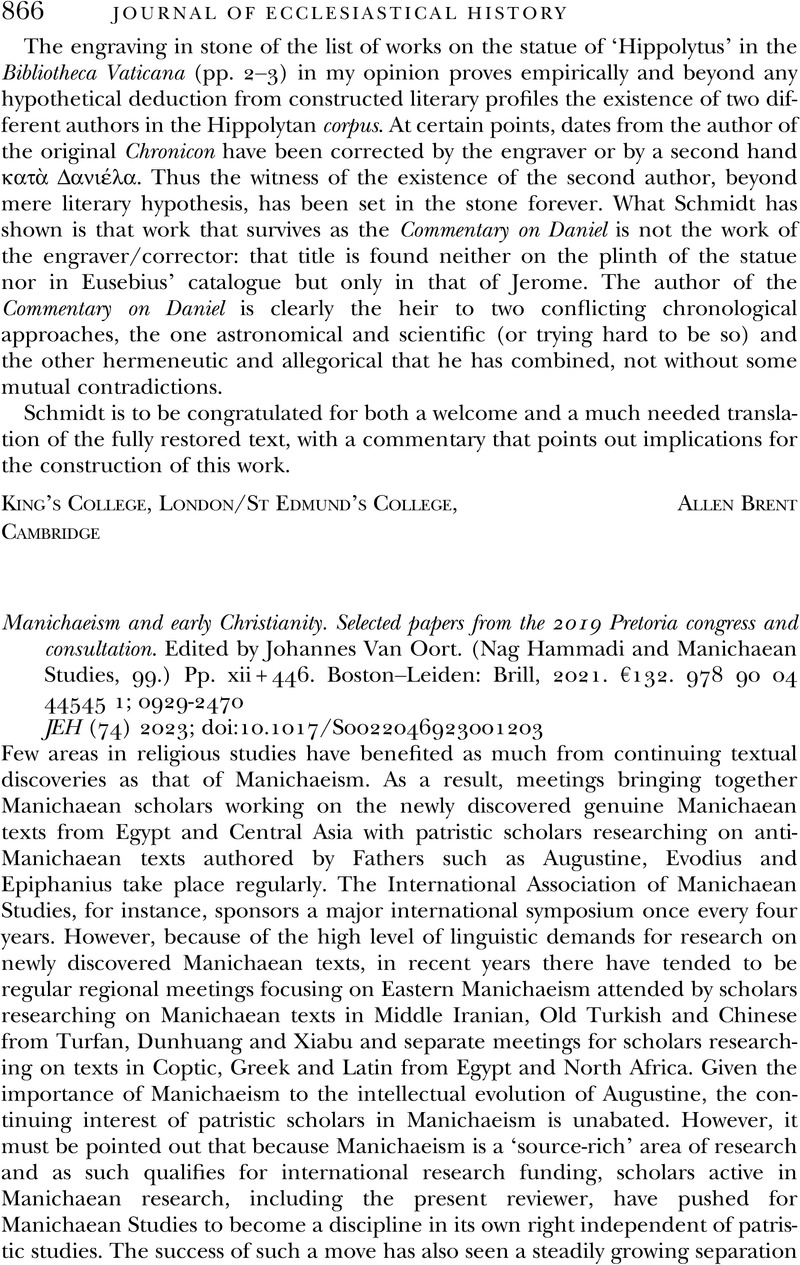No CrossRef data available.
Article contents
Manichaeism and early Christianity. Selected papers from the 2019 Pretoria congress and consultation. Edited by Johannes Van Oort. (Nag Hammadi and Manichaean Studies, 99.) Pp. xii + 446. Boston–Leiden: Brill, 2021. €132. 978 90 04 44545 1; 0929-2470
Review products
Manichaeism and early Christianity. Selected papers from the 2019 Pretoria congress and consultation. Edited by Johannes Van Oort. (Nag Hammadi and Manichaean Studies, 99.) Pp. xii + 446. Boston–Leiden: Brill, 2021. €132. 978 90 04 44545 1; 0929-2470
Published online by Cambridge University Press: 04 October 2023
Abstract
An abstract is not available for this content so a preview has been provided. Please use the Get access link above for information on how to access this content.

- Type
- Reviews
- Information
- Copyright
- Copyright © Cambridge University Press 2023



